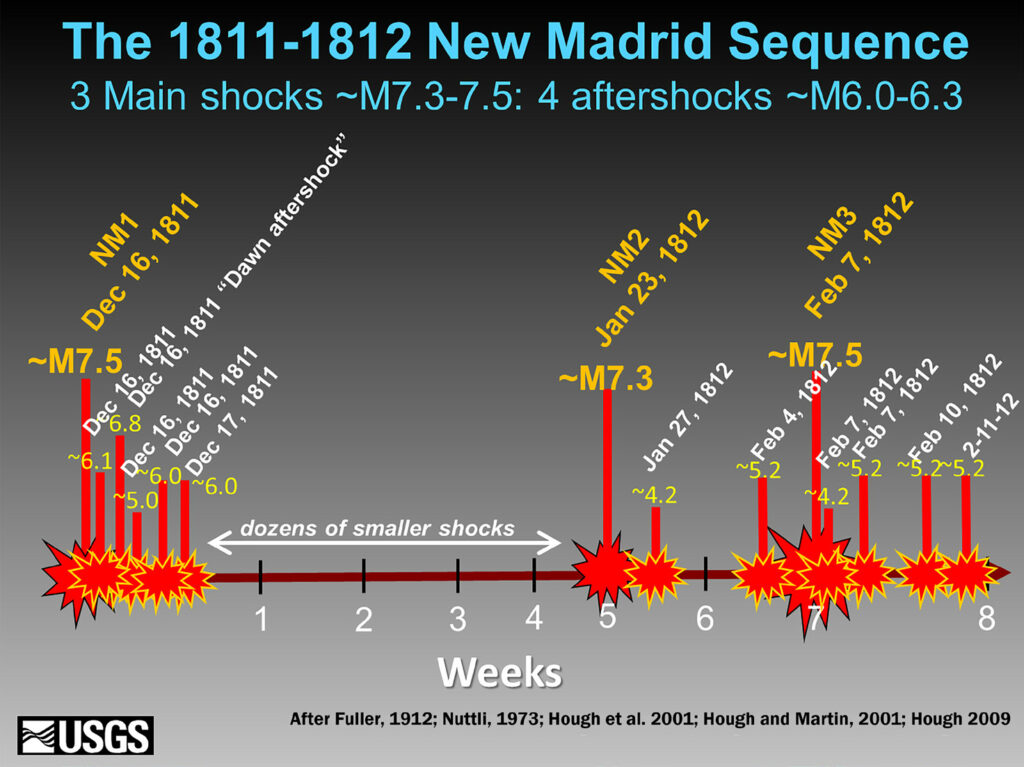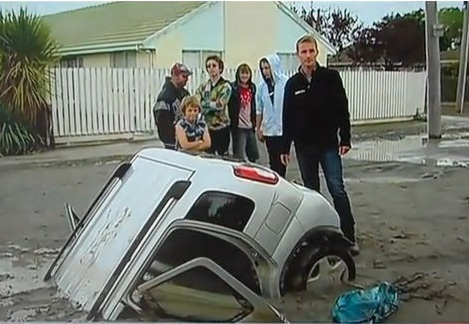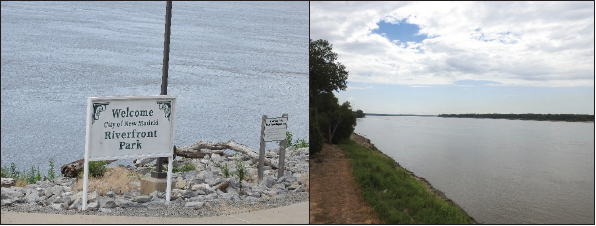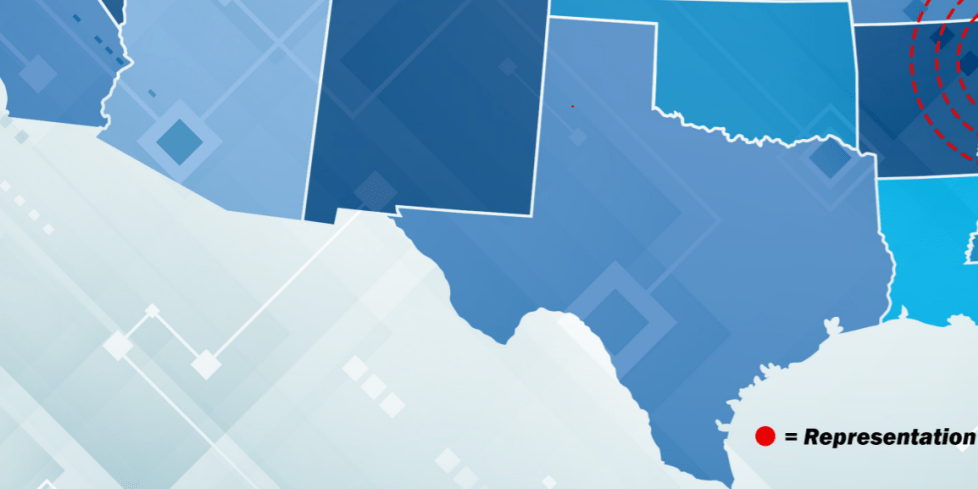There are emergencies we respond to that have relatively short duration with potentially high consequence. For example, tornadoes are over in minutes. A nuclear weapon burst would be over in seconds, and in a matter of hours its radioactive fallout plume would become a discrete and predictable event. A hurricane would subside in hours or days. By the time response teams arrive, the initial event is over. Accordingly, first responders begin lifesaving actions; planners scale the emergency, identify needed resources and create concepts for the follow-on life-sustaining and recovery efforts. In general, most emergencies can be thought of as discrete, non-continuous events; secondary hazards may linger—perhaps natural gas leaks from a tornado or fallout from a
nuclear burst – while the risk from the primary event has ended.
Not all emergencies, however, are single, discrete events. Some emergencies create a continuous hazard to our responders once they arrive on-scene. Consider an active shooter, an Ebola-like disease outbreak, floods or a “secondary device” improvised explosive device scenario in the epigraph are examples of ongoing events that require mitigation. Planners and responders must clearly
know and understand which kind of hazard they are addressing. Failing to correctly assess if an emergency is ongoing in certain situations, like the IED attack in Thailand, may result in a greater number of casualties.
In 1811, the New Madrid Seismic Zone series of earthquakes devastated the sparsely populated Midwest United States. Three major earthquakes (NM 1-3) and hundreds of significant aftershocks shook the region relentlessly for eight weeks. Today disaster/ consequence management planners and exercise designers have generally treated the next NMSZ series of earthquakes as a single, brief, discrete event. While tacitly acknowledging the possibility of aftershocks, plans and exercises understandably focus on immediate life-saving operations, moving to life-sustaining and recovery efforts as soon as the first major earthquake subsides. In reality, it is more likely that recurring, high-end aftershocks will significantly prolong and hamper life-saving efforts, greatly
complicate life-sustainment operations and make starting recovery efforts untenable for prolonged periods of time.
New Madrid Seismic Zone History
Webster defines an aftershock as, “a minor shock following the main shock of an earthquake.” [2] This definition is dangerously misleading if applied to the New Madrid Seismic Zone. The NMSZ earthquake sequence last presented itself in 1811 as a long series of major (magnitude 7.0-7.9) and strong (magnitude 6.1-6.9) earthquakes. As illustrated by the enclosed timeline, the 1811-1812 New Madrid Sequence was a group of four (including the “dawn aftershock” on December 16) major earthquakes and many damaging aftershocks, spread out over an eight-week period. The aftershocks numbered at least four magnitude 6 events and at least five magnitude 5+ events; all of which would have the potential to cause additional damage, especially if there were buildings already damaged by the main shocks. From detailed eyewitness accounts found in journals, diaries and newspaper stories, there were hundreds of smaller earthquakes/events during this time.

Figure 1: This historical sequence shows the two month long ongoing emergency that was faced in 1811-12. (Image courtesy of U.S. Geological Surve/Released)
This earthquake sequence was not only spread out over time, but also in space, as the earthquake epicenter also shifted in location. The epicenter of the Dec. 16, 1811 event was near Blytheville, Arkansas. Over the next eight weeks, the epicenter of the earthquakes moved steadily northeastward, with the epicenter of the last major earthquake being about 55 miles away, in New Madrid, Missouri. For the major cities in the area, such as St. Louis, Missouri, Paducah, Kentucky, and Nashville, Tennessee, the consequence of the NM3 earthquake was more substantial than the initial event because the epicenter was closer. Thus, large earthquakes, unlike low magnitude events, are not just pinpoint events happening at the epicenter. The ruptures and close-in severe shaking impacts of large earthquakes are spread out over a 20-50-mile linear zone.
Robert Williams, a research geophysicist with the United States Geological Survey Earthquake Hazards Program in Golden, Colorado, clarifies how many aftershocks occurred:
In total, Dr. Otto Nuttli, who was a prominent and respected seismologist at Saint Louis University, published work in the early 1970s in which he estimated that more than 200 moderate to large aftershocks struck the New Madrid region between Dec. 16, 1811, and March 15, 1812: 10 of these were greater than about magnitude 6.0; about one hundred were between M5.0 and 5.9; and 89 were in the magnitude 4 range. Nuttli also found that about 18 hundred earthquakes of about M3.0 to 4.0 during the same period. Geologists studying the New Madrid seismic zone after Nuttli’s work found that the geologic record contained convincing evidence of large pre-1811 earthquakes. We now know that over the past 3,000- 4,000 years, the New Madrid seismic zone has repeatedly produced sequences of major earthquakes that contained earthquakes similar in magnitude to the 1811-1812 events. [3]
The history of the NMSZ demands an “ongoing emergency” concept of response, with the same continuing hazard mindset as a “secondary device” IED attack.
Looking Forward
Looking forward, the USGS and the Center for Earthquake Research and Information of the University of Memphis now estimate that there is a 7 to 10 percent probability of a repeat of the 1811–1812 earthquakes (magnitude 7.3 to 7.5) sometime over the next 50 years. The probability of a magnitude 6.0 or larger over the same period is much higher, at 25 to 40 percent. [4]
By studying the geological evidence and the hundreds of detailed personal accounts of people living near the Mississippi River… scientists have built an understanding of the timing and magnitude of the earthquakes occurring during the robust 1811-1812 sequence… Given this history of multiple large shocks… USGS, perhaps in coordination with the Federal Emergency Management Agency and regional State EMA’s, will likely issue a media advisory saying that there is a good chance of additional large main shocks and damaging aftershocks over the coming months. This announcement may cause thousands of people to leave the region seeking shelter outside the strong shaking zone. [3]
Exercises Do Not Reflect History Nor Predictions
Over the years, many exercises have focused on the NMSZ hazard. Unfortunately, participants have the impression that an NMSZ event will be much like that of a tornado, where the initial danger will be over within minutes and responders will be free to execute lifesaving and life sustaining operations and transition to recovery operations soon following. Perhaps there will be aftershocks, but they are not included in the response plans or the training scenarios.
The National Level Exercise 2011 followed this exercise design.
In the scenario, the southwest segment of the NMSZ ruptured at a magnitude of 7.7 from near Marked Tree, Arkansas, to near Ridgley, Tennessee. The shaking from this event triggered a magnitude 6.0 event in the WVSZ near Mt. Carmel, Illinois. The earthquakes caused widespread casualties, displaced households and damaged major infrastructure across eight states — Alabama, Arkansas, Illinois, Indiana, Kentucky, Mississippi, Missouri and Tennessee. [5]
While there is little doubt that this represents a near-worst case initial earthquake, in order to support a four-day exercise, the earthquake sequence was scaled and therefore depicted as a single, discrete event. Geologic activity that took eight weeks to culminate in 1811-12 was compressed to an instant, with a stated goal to “respond to and stabilize areas impacted by a catastrophic earthquake within the initial 72 hours.” [5]
In response to this scenario, players implemented the following actions over the course of the exercise:
- Monday, May 16: Players focused on immediate lifesaving actions and mobilizing responders and resources to locations where critical damage occurred
- Tuesday, May 17: Response activities focused on meeting the health and safety needs of those affected by the simulated catastrophic earthquake
- Wednesday, May 18: In addition to lifesaving activities, players focused on life-sustaining activities and addressed needs related to infrastructure and housing damage
- Thursday, May 19: On the final day of NLE 11, players focused on life-sustaining actions and started shifting to the recovery process [5]
The need to employ all aspects of earthquake immediate response, stabilization and recovery within a four-day exercise overrode the need for a realistic NMSZ Sequence. If the 2011 NLE was overlaid on the historical 1811 timeline, the following actions may have been more indicative of the players’ actions over the exercise:
- Monday, May 16: Players focused on immediate lifesaving actions and mobilizing responders and resources to locations where critical damage occurred
- Tuesday, May 17: Responded to a magnitude 6.1 aftershock. Response activities focused on new immediate lifesaving actions and recovering / refitting response teams affected by aftershock
- Wednesday, May 18: Responded to a magnitude 6.7 aftershock. Focused on new immediate lifesaving actions. Most response teams’ effectiveness significantly reduced due to aftershocks.
Significant new infrastructure and housing damage. Players responded to two new levee failures - Thursday, May 19: Players focused on mobilizing new responders and replacing damaged recovery assets, while continuing lifesaving actions
By compressing the “ongoing emergency” of a NMSZ earthquake, exercises like NLE 2011 have generally overlooked the hazards of conducting rescue operations in a seismically active area. As a result, training scenarios do not force local, state and federal disaster planners to experience having to “restart” and “reinitiate” immediate lifesaving recovery actions. There is no requirement to replace injured response teams, rotate fatigued response teams, replace damaged response equipment or re-assess infrastructure. Simple procedures, such as having engineers assess key bridge trafficability and safety, becomes problematic if 14 earthquakes with a magnitude 4.2 or above occur over eight weeks. Infrastructure reinforcement and repairs become impossible under these conditions.
Local, state and federal disaster planners are also not compelled to conduct lifesaving, life-sustaining and recovery operations all at the same time. By training, responders have prioritized lifesaving operations at the expense of the other aspects of recovery, but will lifesaving still supersede recovery and infrastructure repair if damaged pipelines prevent the flow of essential gasoline
or heating oil to the East Coast? Planners must practice and prepare to execute all missions simultaneously.
Liquefaction: A Special Hazard Consideration
Liquefaction describes a process where a solid is turned into a liquid. In regard to earthquakes, liquefaction occurs when non-clay soils with a uniform particle size become saturated with water and are then subjected to a shock, such as an earthquake. These soils literally become a flowing liquid and lose their strength. The New Madrid area is notorious for liquefaction for two reasons; first, there is a large amount of sand buried just under the surface, and second, the water table is very high due to the close proximity of the Mississippi River. Liquefaction will primarily impact response operations by removing the underlying support from roads, rendering them unusable. Buildings can also fall victim to liquefaction, as their foundations become unsupported and unstable. Liquefaction also causes the infamous “sand blows” or “sand volcanoes”— liquefied sand jets out of the ground, sometimes producing sprays reaching tens of feet in the air and covering significant areas with sand.
Although the USGS has produced maps of both historical and projected liquefaction hazard areas, such as USGS Professional Paper 1336-B The New Madrid Earthquake: An Engineering Geologic Interpretation of Relic Liquefaction Events and Open-File Report 2011-1203 Liquefaction Hazard for the Region of Evansville, Indiana, liquefaction is usually not included in NMSZ exercises. [6]
Recommendations
When the NMSZ becomes active, regardless if it is with magnitude 6 earthquakes or several earthquakes exceeding magnitude 7, it will be one of America’s worst days. The warnings of scientists and experts as well as the lessons of history convey the risk is real and a comprehensive response must be planned. Rudimentary plans exist, and they have been exercised and rehearsed. Plans at all levels, however, must be reviewed to ensure they are coordinated to address an ongoing emergency rather than just a single, discrete event.

Figure 2: Liquefaction following the Christchurch Earthquake in New Zealand in 2011. While usually not directly hazardous to humans, liquefaction complicates transportation and can damage buildings and infrastructure. (Image courtesy of the Pacific Northwest Seismic Network/Released)
Likewise, planning to respond to an incident like the Thailand bombing where a second device is suspected is different from planning for an accidental industrial explosion. Planning for an active NMSZ series, lasting months, must be different from planning for a tornado, lasting minutes. New required capabilities to explore include:
- Extending lifesaving operations. Even discrete, instant emergencies like 9/11, lifesaving operations continued for several days. A NMSZ series would cause the “reset” or “re-initiation” of lifesaving operations to occur over a vast area. Recurring aftershocks days and weeks later will generate new civilian and responder casualties. The risk to the population may be exacerbated if secondary earthquakes or significant aftershocks occur during evacuation efforts. Rescue and recovery teams will be highly vulnerable to additional earthquakes as they search compromised infrastructure for survivors. A constant, reliable stream of trained response personnel and equipment will be required to maintain lifesaving operations.
- Conducting simultaneous lifesaving, life-sustaining and recovery operations. Disaster response priorities have always been clear – lifesaving, then life-sustaining and finally, recovery. Local, state and federal disaster responders will be compelled to conduct all three operations simultaneously during an extended NMSZ series. For example, prescription medicine refills and dialysis support for civilians, normally considered life-sustaining functions, will have to be provided simultaneously with lifesaving functions as the response continues. Recovery efforts, which may include returning critical petroleum product pipelines to service, may overshadow both lifesaving and life-sustaining as the East Coast runs low on the gasoline needed to transport food into major cities and becomes a national concern.
- Welcoming foreign response teams. Time and distance considerations and bureaucratic hurdles have generally reduced any consideration of international search and rescue teams to a
secondary priority during earthquake exercises. However, in an NMSZ series response lasting months, there will be time to import international response teams. The need for these teams will be
high, as U.S. teams are injured, stand down for equipment reset, maintenance or just become exhausted over time. Pre-coordination with some of these international teams, if written into current plans, may greatly reduce their response time and save American lives. - Planning on the long-term displacement of citizens. An evacuation call by USGS and FEMA will create a vast stream of displaced citizens. If months pass before the earthquakes end, and
more months pass before electrical and water services are restored, the regional population will have to be moved, housed and cared for. An NMSZ series creates the possibility of a second,
preventable tragedy if plans are not in place to ensure proper caretaking of our displaced and vulnerable civilian population. - Caution against forward staging. It is usually desirable to create forward areas to stage teams and supplies in order to reduce the problems associated with long-haul issues. However, with an NMSZ series consisting of several earthquakes and shifting epicenters, forward staging of teams and bulk supplies is a dangerous gamble. An additional concern with forward staging involves liquefaction, which occurs when certain saturated soils lose their strength following an earthquake. New Madrid is notorious for liquefaction, which can remove support from otherwise undamaged roads, rendering them unusable.
- Planning on second-order disasters generated by follow-on earthquakes. Levees and similar infrastructure may survive the initial earthquakes only to fail during the second earthquake or major aftershock. Developing training scenarios with these secondary disasters occurring during response operations would provide responders with challenging and realistic training. For example, it was not the initial impact of Hurricane Katrina but the second-order flood resulting from a levee breach that caused the majority of the deaths during the disaster.
- Conducting simultaneous long-term response and recovery missions. While many exercises simulate the transition between response and recovery, a brief review did not find exercises where both were conducted simultaneously for extended periods of time. A NMSZ series would create a competition of resources between the two, including the personnel assigned to overseeing both types of operations. Future exercises should explore the division of staffing of the two phases for federal and state governments, and how best to allocate resources. In addition, both of these activities would need to be prepared to conduct sustainable operations with rotational deployment plans and the expansion of reserve personnel cadres, such as the Department of Homeland Security Surge Capacity Force.

Figure 3: New Madrid’s Riverfront Park is sited on top of the New Madrid Levee (right), protecting the town from the Mississippi River. This levee, completed in 1927, is typical of infrastructure that would have to be inspected and possibly reinforced after each significant aftershock. (Photos by author/Released)
Conclusion
It will be one of the United States’ worst days when the NMSZ becomes active. It is certain that this day will come to pass. By looking at history and heading geological forecasts, we must ensure that our response to this enduring disaster is the best that we can devise. There is no reason for us to repeat the mistakes of the responders in Thailand, who missed the secondary device in their desire to save lives.
References
1. Ellifritz, G. (2016, April 4). The Secondary Device. Retrieved from http://www.activeresponsetraining.net/the-secondary-device (accessed November 27, 2016).
2. Fredrick C. Mish, ed., Webster’s Ninth New Collegiate Dictionary (Springfield, MA: Merriam-Webster Inc., 1985), 63.
3. [E-mail to R. Williams]. (2016, November 9).
4. Anderson, N. (2009). Preparing for a Significant Central U.S. Earthquake: Science Needs of the Emergency Response Community (Rep. No. NUTC ETT205 ). Retrieved from http://transportation.mst.edu/media/research/transportation/documents/ETT205_CR.pdf (accessed March 13, 2017)
5. Federal Emergency Management Agency. (2011, June 14). National Level Exercise 2011 (Rep.). (NLE 11). Retrieved from https://www.fema.gov/txt/media/factsheets/
2011/nle11_quick_look_report.txt (accessed January 12, 2017)
6. Obermeier, S. F. (1989). The New Madrid Earthquakes: An engineering-geologic interpretation of relict liquefaction features (U.S. Geological Survey Professional Paper
1336-B). Washington: United States Government Printing Office. Retrieved from https://pubs.usgs.gov/pp/1336b/report.pdf (accessed March 13, 2017)


